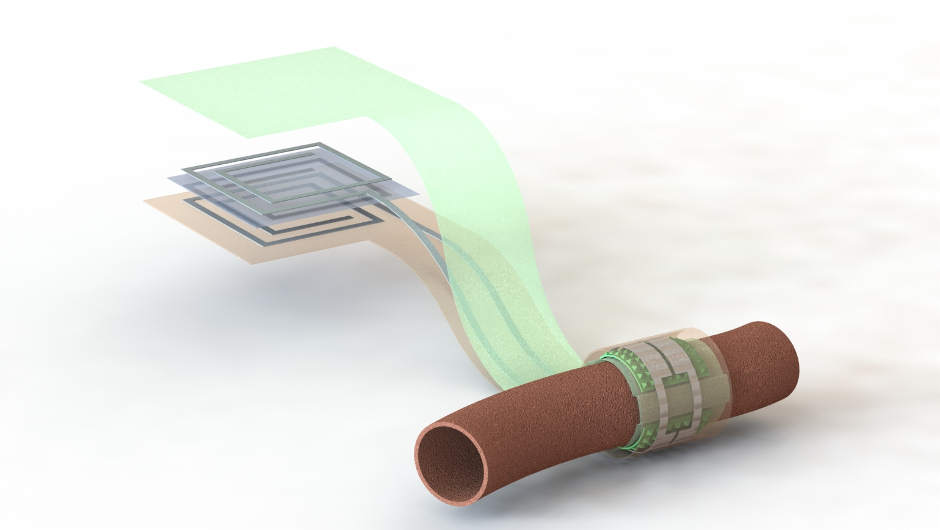
The biodegradable, battery-free and wireless sensor doesn’t need to be removed from a patient and can warn doctors of an arterial blockage. The compact sensor is detailed in a paper published in Nature Biomedical Engineering.
"Measurement of blood flow is critical in many medical specialities, so a wireless biodegradable sensor could impact multiple fields including vascular, transplant, reconstructive and cardiac surgery," said Paige Fox, assistant professor of surgery and co-senior author of the paper. "This is a technology that will allow us to extend our care without requiring face-to-face visits or tests."
According to Stanford, the sensor wraps around the healing vessel, where blood pulsing past pushes on its inner surface. As the shape of that surface changes, it alters the sensor's capacity to store electric charge, which doctors can detect remotely from a device located near the skin but outside the body. That device solicits a reading by pinging the antenna of the sensor. In the future, this device could come in the form of a stick-on patch or be integrated into other technology, like a wearable device or smartphone.
The researchers first tested the sensor by pumping air through an artery-sized tube to mimic pulsing blood flow. Surgeon Yukitoshi Kaizawa, a former postdoctoral scholar at Stanford and co-author of the paper, also implanted the sensor around an artery in a rat. The sensor then successfully reported blood flow to the wireless reader. At this point, the team were interested in detecting complete blockages, but they did see indications that future versions of this sensor could identify finer fluctuations of blood flow.
The sensor is a wireless version of technology that chemical engineer Zhenan Bao has been developing to give prostheses a sense of touch.
"This one has a history," said Bao, the K. K. Lee Professor in the School of Engineering and co-senior author of the paper. "We were always interested in how we can utilise these kinds of sensors in medical applications, but it took a while to find the right fit."
The researchers modified their existing sensor's materials to make it sensitive to pulsing blood but rigid enough to hold its shape. They also had to move the antenna to a location where it would be secure, not affected by the pulsation, and re-design the capacitor so it could be placed around an artery.
"It was a very exacting project and required many rounds of experiments and redesign," said Levent Beker, co-lead author of the paper and a postdoctoral scholar in the Bao lab.
The researchers are now finding the best way to attach the sensors to the vessels and refine their sensitivity.
"Using sensors to allow a patient to discover problems early on is becoming a trend for precision health," Bao said. "It will require people from engineering, from medical school and data people to really work together, and the problems they can address are very exciting."
This work was funded by the Swiss National Science Foundation, the European Commission, Stanford ChEM-H and the US National Science Foundation.




Poll: Should the UK’s railways be renationalised?
I think that a network inclusive of the vehicles on it would make sense. However it remains to be seen if there is any plan for it to be for the...